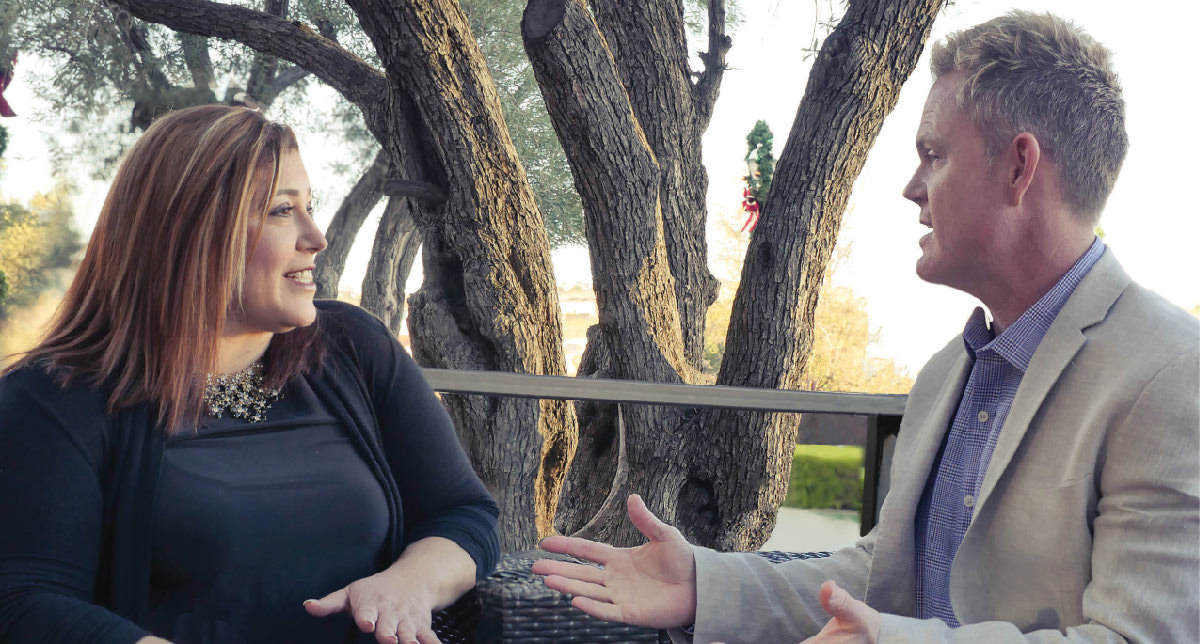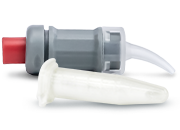
Shift magazine shares an interview with Dr. Victoria Sullivan, a pediatric specialist, and Dr. John P. Hansen, a cosmetic and restorative dentist, regarding the challenges faced when restoring the teeth of a patient with amelogenesis imperfecta (AI). The following unique discussion addresses issues of an AI patient’s primary teeth and the especially challenging considerations when dealing with their permeant hypoplastic dentition.
The Question by Victoria Sullivan, DDS
“Zirconia crowns offer pediatric dentists a new and beautiful alternative for treating patients. The field of pediatric dentistry, however, is not known for rapidly adopting new advances in practice. In many cases, we are using techniques that were taught in the 1800’s. G.V. Black’s concepts of “extension for prevention” is still in our lexicon even as it has disappeared from most of our colleagues’ conversations.
Improvements in Cad/Cam technology, precision work, and fancy esthetics simply have not been adopted in pediatric dentistry as commonly practiced. We value the world of speed, bulk, simple-but-functional, “good-enough” dentistry. Our successful outcomes are measured in grins and giggles, not crowns and veneers. However, with the introduction of pediatric Zirconia crowns, it is now within the arena of esthetics where we can display the best of our techniques and strengths while addressing the realm of precision and beauty not previously open to us. I am delighted to now offer the Zirconia crowns option to my patients.
It is natural, then, to wish to extend the potential value of these procedures to challenges with permanent dentition. Can prefabricated Zirconia crowns offer our patients a beautiful, durable, and functional solution for crumbling painful, and damaged permanent molars affected with amelogenesis imperfecta?”
Shift Magazine
How common is ai in your practice, and what has been your experience in dealing with patients having ai?
V Sullivan
In my clinical practice, I have not encountered a full manifestation of AI. However, I had one case in residency and see enamel errors requiring full-coverage crowns on a weekly basis. In these cases, I first try to remove the damaged portion of the tooth. Then the decision to use a full-coverage crown is tied to two factors: 1) patient discomfort, and 2) structural compromise.
J P Hansen
In my 20 years of practice, I have restored four of these cases on kids that were in their mid to late teens. They were all full-mouth reconstructions. Two cases were done all at once, and the other two were completed over a period of time. The decision to complete the treatment over time versus all at once was based on two factors:
1) was the child done growing? and 2) the cost of the reconstructive treatment.
Shift Magazine
What have been the chief complaints from patients that come into your office with ai?
V Sullivan
Generally, children with extensive enamel errors complain of sensitivity to hot and cold. I also notice discoloration of their teeth and that the enamel present on their teeth is inconsistent.
J P Hansen
I usually see these patients in their mid-teens when all the primary teeth have exfoliated and the permanent dentition has already been restored long ago by their pediatric dentist—so the pain has already been managed. Most of these kids have a mouth full of silver in the posterior and stained and breaking-down composites in the anterior. Having their smile restored to normal is the main concern for these teenagers.
Shift Magazine
Beyond the pain and discomfort associated with ai, what have you seen as the social implications for patients with ai?
V Sullivan
This is really obvious. The children with these conditions have misshapen, odd-looking teeth that are frequently broken and look stained. In a culture hyper-obsessed with an individual’s visual image, these children are not as socially adept as their peers. They cover their mouths when they laugh or smile, and they are hampered in reaching normal emotions, academic, and social milestones.
“If I had to guess, I would foresee all kinds of potential complications resulting from using prefabricated Zirconia crowns on adult teeth. These would include endo issues, chronic inflammation, and eventually tooth loss for many patients.”
J P Hansen
I have two daughters not far past their teenage years and one son that is now 18. I can tell you kids do get teased and picked on and this can have a significant impact on their social well-being. When parents bring their kids to my office, they are distraught over the appearance of their children’s teeth. They just want them to fit in with the other kids and not look different. Because of the hereditary nature of AI, many of the moms have already gone through their school years and have themselves struggled emotionally with AI.
Shift Magazine
How has the introduction of the Pediatric zirconia crown by sprig oral health technologies, inc. Impacted how you practice and the level of esthetic care you provide to your patients?
V Sullivan
Zirconia crowns have changed the quality of my practice immeasurably. Before I could only offer my patients a bulky, bright “white chicklet’s” which obviously looked fake and chipped frequently. Now I am able to offer a restoration people cannot detect. I have parents raving about the results and sending me full glossy photos of their children. These crowns don’t chip or break, and they look incredibly real. Now that I am able to offer such attractive results, parents are happy and my practice is flourishing.
J P Hansen
I love using Zirconia crowns. Having a largely adult esthetic practice, I always used to hate placing SSC’s on anybody. With a Zirconia option now available, I feel good placing these crowns because they rival the esthetics of what I do in the adult realm. EZCrowns are the only prefab Zirconia crowns on the market that are not monochromatic so there is no bulky “chicklety” look as with some of the other crown options. Just like custom adult crowns, they are hand characterized to blend in with the surrounding teeth. Plus, I know they are going to last and that the tissue response will be better than any other option. And it is a bonus to know I am not going to have to deal with parents complaining about a silver crown on their kid after just finishing what I thought was a good job.
Shift Magazine
From a clinical standpoint, what are the main challenges of restoring the permanent teeth of an ai patient?
V Sullivan
There are probably three main issues that need to be addressed. The first and most important one is anesthesia. These teeth are frequently difficult to numb adequately. The children often require double the usual amount of anesthesia to be comfortable.
The second factor is removing the decay and damaged structure while preserving as much of the sound tooth as possible. My effort as a pediatric dentist is directed toward completing a restoration that will act as a space- holder. In so doing, it is necessary to ensure clearance for the crown. However, I know my restoration is temporary and will need to later be the foundation upon which the final restoration will be placed. I know no matter how little tooth structure I remove it will end up being too much and make the final restoration more difficult.
The final issue is esthetics. Zirconia crowns are undoubtedly the best esthetic option for primary teeth. Sadly, this is not the case when it comes to adult dentition. One of the most disappointing realities from a pediatric dentist’s perspective is that in pediatrics we do not yet have a satisfactory temporary esthetic solution for dealing with adult dentition—one that does not potentially compromise the future health of the tooth.
J P Hansen
By the time I see patients with AI, most often their teeth have already been restored with stainless steel crowns in the posterior. I never know what I am going to find when I pop these off. There can be gross recurrent caries, and many times the preps will be undercut. Because most of these margins are wide open and very sub-gingival, the tissue is a bloody mess. This situation makes it very difficult to refine the margins and take an impression. I usually will take the SSCs off, remove the decay and refine the margins enough so I can seat a well-fitting composite temporary crown. Then we come back later and do the final refinement and impressions once the tissue is healthy. Also, many of these cases have lost vertical dimension due to the SSCs being too short. I almost always have to re-establish the vertical in the provisionals before proceeding with the permanent restorations.
Shift Magazine
Where do you see prefabricated zirconia crowns fitting into the treatment plan for restoring permanent dentition?
V Sullivan
It is a tempting “honey-trap” to apply Zirconia crowns to adult molars. We enjoy being the hero and delivering not just functional results but beautiful ones as well. However, there are two key principles to remember when applying a Zirconia crown restoration: 1) the vital importance of ensuring a sub-gingival reduction, and 2) the absolute necessity of prepping for a passive fit. Both of these principles involve the use of techniques which are diametrically opposed to the techniques required to reach the goal of stabilizing painful and dysfunctional adult molars with a permanent restoration. Given this dilemma, minimizing tooth reduction for the purpose of
ensuring a later adequate margin placement is all but impossible when using a Zirconia crown. Thus, we must, unfortunately, conclude that prefabricated Zirconia crowns are an inferior option for the restoration of permanent molars.
J P Hansen
I can’t tell you how many times I have had pediatric dentists ask for Zirconia crowns for permanent molars. This would be a huge market for us. Some of our competitors offer them. We made them many years ago, but we decided not to sell them; it was an ethical issue for us. Both Jeff and I did not want to be responsible for potentially thousands of people losing permanent teeth down the road because of prefabricated Zirconia restorations placed early in their lives. Let me explain the reasons why.
The prefabricated Zirconia crown makes a great temporary crown and works fantastically on primary teeth. It only has to last until the tooth exfoliates, plus it has better tissue response and is far more durable than the standard SSC. In my opinion, the esthetics of Zirconia crowns together with their greater durability compared to SSCs make Zirconia a preferred option for treatment of AI in the primary dentition.
For an adult tooth, however, at some point that prefab Zirconia crown will have to be removed and replaced with a permanent restoration. The passive-fit preparation required for a prefabricated Zirconia crown leaves no margin for a permanent crown later—the prep is basically a cylinder. How can you make a permanent crown fit where there is no margin, no chamfer, no shoulder? Maybe if you are lucky you will have a remnant of a knife edge somewhere, but most teeth will not have enough margin suitable for placing a permanent custom crown. Furthermore, the margin is way sub-gingival which further complicates things. As a restorative dentist, I cannot even imagine having to restore adult teeth in this condition and then hoping they will last the rest of a patient’s life. When it comes to using prefabricated crowns to restore the adult dentition, this is one situation in which I clearly see stainless steel as being a better restorative option.


